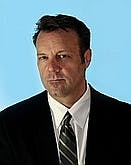I’ve been thinking a lot about the Internet of Things and LED lighting lately and found some confusion in the marketplace. First, not all devices or fixtures actually use the “Internet” in the Internet of Things (IoT). Many are controlled wirelessly via Bluetooth, RF, etc., but get lumped in as an IoT device. I also think people don’t like the term “Things.” They would much rather call items or devices by what they are or what they are designed to do. A microwave oven cooks with micro waves. This is imperative especially in the advertising world. Although flashlights don’t flash as initially designed to preserve battery life. But would it have mattered if a marketing department called it a portable “LightThing”? I’m sure the global acceptance over time may have been the same. There are other examples like the cellular phone, where the namesake is now minimized by the functions and features included in the “smart” product. The talking to someone at a great distance element seems to be secondary to the sales decision of these devices. The lighting business is morphing quickly with auto controls or data collection within the lighting fixtures. The decisions made today will become paramount to the future of the illumination business, as we currently know it. More on this in a moment.
With many of my tasks from PennWell, I also get to write for LEDs Magazine and speak at The LED Show and LightSpace conferences. So, as you can imagine, there is a necessity to stay abreast of the latest technology shifts. One effective method that I have recently used to stave off the lagging information curve is by assembling a group of likeminded Lighting and Technology Gurus or Rainmakers. This selection of industry leaders and movers are called my Mastermind Group. It loosely originates from a Napoleon Hill book from the beginning of last century. In an unstructured and informal fashion, we chat about solid-state lighting (SSL) and the trajectory path of innovation. I find this refreshing and mentally invigorating. I will add these talks in future articles and blogs.
So how does this apply to IoT and lighting? The premise of IoT is probably the most welcomed and misunderstood concept in the 21st century lighting business. We as an industry should quickly and intelligently embrace the power we currently hold. It distills down to illumination, data, power, and control(s). We (lighting people) have the potential to be the conduit or collectors of information to provide it neatly and concisely to the rest of the world. It makes sense to have all of the impending amassed data do something important, rather than collect data for data collection sake. The lighting industry is poised to be the gatekeeper of this information — and with great power comes great responsibility. Simply put, we have been handed a powerful genie that is still amiable to live within the bottle…our bottle. Fixture manufacturers should responsibly embrace this task and not get sidelined due to the lack of forethought or future proofing the business. In the rush to be part of the IoT rage, the lighting industry appears to be giving up too much control.
I’ve said this in several talks before: “There are many other capable industries looking to play in our sandbox.” Some may be nice (at first) but most will not understand the basic sharing principle. This will further disrupt the fragile ecosystem that we know today and minimize the “lighting” control on the building footprint. Does the ceiling grid manufacturer have the ultimate ownership of the light plane or does the electrical grid own the control of power to illuminate the space? Does the Facility Health and Safety Officer (theoretically created new position) dictate how you should “feel” at 3:30pm by changing the color temperature of the light? Will the purchase of lighting equipment end up simply as an accessory to the larger specification? All of these questions are real concerns that need to be discussed on a broader scale. Not a “sky is falling” statement, merely my observations and overview.
One of the main reasons that I created The LED Show (9 years ago) was to have a forum that allowed these discussions to take place in a peaceful and meaningful environment. Now, we have Strategies in Light, The LED Show, and Lightspace all under one umbrella/roof. This synergistic event brings the component, lighting, and designer-specifier masterminds all together, enabling and promoting these important conversations. I look forward to your thoughts and constructive comments. These talks and chats are what will create a united front and strengthen the SSL business, for all of us.
Visit strategiesinlight.com and lightspacecalifornia.com for more information on the conferences, exhibitions, and registration details.





